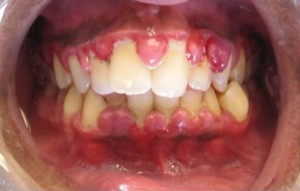Indeed, gum-related diseases are curable. Aside from applying antibiotics, scaling and root planning procedure is also used by dental experts specifically in reducing the severity of the said oral condition. Unfortunately, there comes a time where the aforementioned procedures can no longer treat the ailment. This is where you can relish the effectiveness of gingivectomy. Read this post here for more details about gingivectomy.
Gingivectomy involves the removal of gingiva. This also includes the extraction of infected pockets, slowing down the development of gum disease. As all of us know, gum disease weakens the gum tissues of the person. While losing the gums, the pockets are starting to exist, attacking the teeth and gums. Basically, these pockets are the places where the plaques stay. If left untreated, these plaques will turn into tartar that will lead to gum disease. For early stages of gum disease, a simple scaling and root planning procedure can solve the issue. However, if this case comes to worse, an oral surgery might be the best thing to do. This oral surgery is known as the gingivectomy. This dental method helps eliminate the seriousness of gum disease by removing all the pockets that contain damaged gum tissues.
While opting for Gingivectomy, a periodontist or oral surgeon is needed to complete the process. First off, an oral surgeon will perform an SRP procedure (scaling and root planning procedure). This step will help the specialist from removing the bad bacteria and tartar located below the gum line. Right after removing the tartar, the surgeon will numb the areas to be treated by using local or general anesthesia. After numbing the areas, the periodontist may now apply the said method through removing the damaged gum tissues. To minimize the bleeding, the dental expert will use a scalpel. But since the realm of dentistry is now advancing, an expert will apply a laser gingivectomy. Aside from stopping the bleeding, this tool helps the wounds to heal faster. Most of the time, the number of hours needed to complete the said procedure depends on the type of gingivectomy procedure used. If you have multiple damaged tissues that need to be removed, the procedure may take few hours.
After executing the procedure, the periodontist will place a dressing over the gums for 7-10 days. This will help the gums to heal without getting any infection or damages. As the healing process goes on, it is imperative to follow the recommendations given by the oral surgeon. In the guidelines, you will be given instructions on how to use the dressing properly while eating. Of course, you may still apply the right oral hygiene but avert brushing the treated areas.
If you think that you need Gingivectomy, speak with your dentist or periodontist. There is nothing to worry about this procedure though because they are actually painless excluding of course, the part where you can feel minor discomforts. On the other hand, if you experience infections like excessive pain and bleeding, contact your dental specialist straight away. Always keep in mind the main objective of Gingivectomy procedure is to reduce and remove the existence of gum disease.

